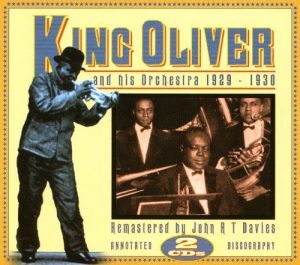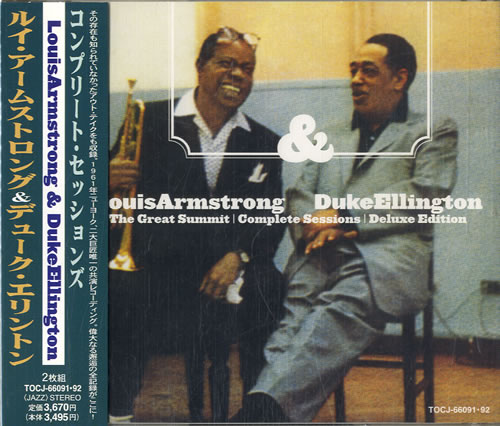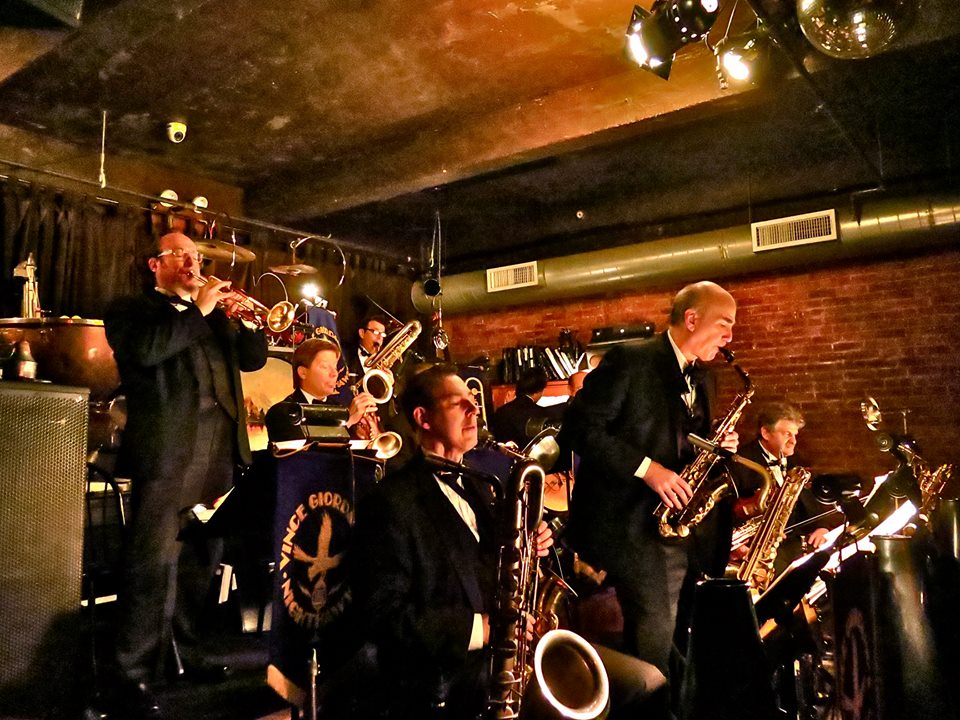 Set forth below is the second “Texas Shout” column, reprinted from the January 1990 issue of The American Rag(then West Coast Rag). It is the only “Texas Shout” not written specifically for this publication, having previously appeared in the August 1989 Jersey Jazz.
Set forth below is the second “Texas Shout” column, reprinted from the January 1990 issue of The American Rag(then West Coast Rag). It is the only “Texas Shout” not written specifically for this publication, having previously appeared in the August 1989 Jersey Jazz.
Because the text has not been updated, I should point out that, during the past decade, nearly everything of jazz interest that was recorded in the twenties has been reissued on CD. However, the points made in the column are still valid because most such reissues are on foreign labels stocked in the U.S. only by specialty dealers. One has to be deeply involved in Dixieland even to know where to obtain them.
It hardly needs to be said that you learn how to play jazz by listening to jazzmen perform. It goes without saying that, if you want to play jazz well, you need to listen to the greatest artists in the field. If you have not heard the best, and if you do not fully understand what makes them the best, the odds are that you will not move your own talents in the proper direction, nor stretch your skills to their maximum potential.
Where classic jazz is concerned, most of the truly lustrous names can be found only on recordings. Bud Freeman and Wild Bill Davison are about the last active practitioners from the twenties. If you want to study with Oliver, Bix, Louis, Bessie, Fatha, etc., you need to look toward your record player as a classroom.
 Unfortunately, there no longer is any reasonable accessibility to the acknowledged masterpieces in the vintage discography. Go into your nearest record store and try to find any pre-swing jazz at all, much less music recorded in the twenties (regarded today, I suppose, as being in unacceptable fidelity). Although some of this material is beginning to appear on CDs, there is not as yet a whole lot of it, and as far as I know, mall stores, which usually go for high-volume, fast-turnover items, aren’t rushing to stock up on what has been issued.
Unfortunately, there no longer is any reasonable accessibility to the acknowledged masterpieces in the vintage discography. Go into your nearest record store and try to find any pre-swing jazz at all, much less music recorded in the twenties (regarded today, I suppose, as being in unacceptable fidelity). Although some of this material is beginning to appear on CDs, there is not as yet a whole lot of it, and as far as I know, mall stores, which usually go for high-volume, fast-turnover items, aren’t rushing to stock up on what has been issued.
Similarly, the large domestic corporations with rights to, say, the OKehs, Victors, Vocalions, etc., have minimal interest in producing recordings that will have low-volume sales to a decreasing number of fans of older-style jazz. Further, small collectors’ labels, for understandable reasons, tend to focus on really rare 78s that have never been reissued.
 Thus, the budding jazzman who needs sources is cut off at the knees. Seasoned collectors know that classic stuff can be obtained, often on foreign labels, through specialty mail-order houses, but how many of today’s players even know about the limited-circulation publications in which such recordings are advertised?
Thus, the budding jazzman who needs sources is cut off at the knees. Seasoned collectors know that classic stuff can be obtained, often on foreign labels, through specialty mail-order houses, but how many of today’s players even know about the limited-circulation publications in which such recordings are advertised?
The net effect of this dearth of masterworks is a change in the nature of the jazz being played. It is only too obvious that many of today’s organized bands are learning licks and tunes not from the originals but from each other, especially at festivals (about the only place where much interchange of ideas can occur these days, or where recordings can be bought in any quantity or variety). If you hear Band X play Tune Y, and you like the tune or it gets a good crowd response, you take the chart, using your hand-held cassette machine, and eventually show up with that tune played much that way in your own book. A natural enough thing to do, and where else can you find new tunes and figures?
So far, so good. But the problem is that the guys on the next bandstand, though certainly capable enough, are probably themselves part-timers just like you. Without demeaning their talents, we still know that few of them deserve to be mentioned in the same breath with the Hall Of Famers. They may have graduated from more modern forms of music in which amplification and heavy rhythm are taken for granted.* How likely is it that your own performances are going to be much improved if you follow their lead?
Thus we have, as once was noted in the letters column of The Mississippi Rag, some bands getting standing ovations today that would have been laughed off the stage twenty years ago. This situation is not their fault. Most of them in that category, I’m sure, are playing as well and honestly as they can. However, their growth has been stunted through lack of opportunity to understand what they’re supposed to be doing via intimate familiarity with the great recordings in the idiom. Audiences conditioned to a steady diet of amorphous music on the radio and in commercials, movie and TV sound tracks, etc., are in the same position and respond enthusiastically to a type of pre-swing jazz that is becoming increasingly hybridized.
 Perhaps there is nothing wrong with this development. Perhaps all music should change over time. Perhaps it is just fine for musicians to play what they want to, and audiences to enjoy it, regardless of what it’s called.
Perhaps there is nothing wrong with this development. Perhaps all music should change over time. Perhaps it is just fine for musicians to play what they want to, and audiences to enjoy it, regardless of what it’s called.
Personally, though, I have some trouble with the way things are going. If our music is going to change, I don’t think it’s right that older-style jazz should become something else without realizing that it is doing so, or without changing what it calls itself.
As one who was lucky enough to amass a collection of music during a time when great material from the golden age was reissued in abundance, I get discouraged at the current flow of recordings from artists who too often have nothing to say, nothing to add to what’s gone before. And yet I think they would have much to contribute, if they only knew how to go about it — as can be demonstrated by a relatively limited number of musicians/bands (Vince Giordano’s Nighthawks, The Jim Cullum Jazz Band, Warren Vache, Jr., Howard Alden and Kenny Davern, among others, are names that come quickly to mind that will be familiar to readers of Jersey Jazz) who have developed personal and valid styles within the bounds of traditional jazz. Which brings me back to the points in my first paragraph. With no solution to my concerns, that is as good a place to stop as any.

*As an aside, a good classic-style combo shouldn’t need amplification, except for vocals and announcements, on a typical indoor gig — i.e., one that isn’t in a large auditorium. Its instrumentation took shape at a time when sound equipment wasn’t available, and that’s why banjos, tubas, trombones and other instruments that can easily be heard without amplification wound up in Dixieland bands in the first place. Nevertheless, how may of you have seen bands that always operate with each man’s axe stuck into a turned-up mike? Can that kind of music be likely to “swing” in a jazz sense? Or will its rhythmic intensity and excitement be more likely to resemble that of rock rhythm?
Back to the Texas Shout Index.

The full run of “Texas Shout” has been collected into a lavishly illustrated trade paperback entitled Texas Shout: How Dixieland Jazz Works. This book is available @ $20.00 plus $2.95 shipping from Tex Wyndham, On request, Tex will autograph the book and add a personalized note (be sure to tell him to whom the note should be addressed).
Tex Wyndham’s 3 CD Guide to Dixieland with music and commentary is available for $20 plus $2.95 shipping. The separate CD, A History of Ragtime: Tex Wyndham Live At Santa Rosa, is available for $13.00 plus $2.00 shipping. On request, Tex will autograph the inner sleeve and add a personalized note (be sure to tell him to whom the note should be addressed).
Send payment to Tex Wyndham, P.O. Box 831, Mendenhall, PA 19357, Phone (610) 388-6330.
Note: All links, pictures, videos or graphics accompanying the Shouts were added at the discretion of the Syncopated Times editorial staff. They did not accompany the original columns and do not necessarily reflect the opinion of Tex Wyndham.
From roughly 1970-2010, Tex Wyndham was: (1) one of the best-known revivalist Dixieland jazz musicians in the US, as cornetist, pianist and bandleader, (2) one of the best-known ragtime pianists in the US, and (3) one of the most respected critics in the US of Dixieland jazz, ragtime, and related music. He is the only person about whom all three of those statements can be made.


















